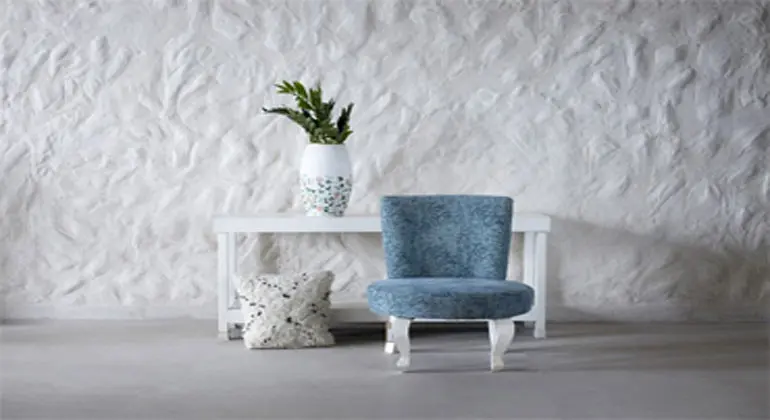The 5 Most Common Interior Textures

hen it comes to interior design, there are countless elements that contribute to creating a visually appealing and functional space. One often overlooked aspect is the texture of the walls and surfaces within a room. The texture adds depth, interest, and personality to a space, making it an important consideration in any design project. In this blog post, we will explore the five most common interior textures that can transform your home.
Smooth Texture:
The smooth texture is perhaps the most common and versatile option. It provides a clean and modern look, making it suitable for any style of interior design. Smooth surfaces are achieved by applying a skim coat of joint compound or plaster and then sanding it down to create a seamless finish. Great for minimalist and contemporary designs, smooth textures allow other design elements to take center stage.
Stucco Texture:
Stucco is a popular texture that adds a touch of elegance to any room. This texture is achieved by applying a mixture of cement, sand, and water to create a rough, uneven surface. Stucco can be left in its natural color or painted to match the room's color scheme. It works well in Mediterranean, Spanish, or Tuscan-inspired interiors and adds a sense of warmth and texture to the walls.
Venetian Plaster Texture:
Venetian plaster is a timeless technique that provides a luxurious and sophisticated look to any space. It involves applying multiple layers of a special plaster mixture with a trowel, resulting in a polished and marble-like finish. Venetian plaster can be used to create various effects, including a smooth or textured appearance, depending on the application technique. This texture is perfect for adding a touch of elegance to a formal dining room or a luxurious master bedroom.
Brick Texture:
Brick walls have gained immense popularity in recent years, thanks to the rise of industrial and rustic interior design styles. Exposed brick walls add character and charm to a space, creating a focal point that brings a sense of history and nostalgia. Brick textures can be achieved by using real bricks or through faux brick panels or wallpaper. Whether used as an accent wall or throughout an entire room, brick textures add warmth and texture, especially in urban loft or farmhouse-inspired interiors.
Textured Wallpaper:
If you're looking for a quick and easy way to introduce texture to your walls, textured wallpaper is an excellent option. With a wide range of patterns and finishes available, textured wallpaper allows you to add depth and interest to your space without the mess and labor of traditional textures. From subtle embossed patterns to bold geometric designs, textured wallpaper can be used in any room to create a unique and personalized look.
Conclusion:
In conclusion, the texture of your walls and surfaces plays a crucial role in creating an inviting and visually appealing interior. Whether you prefer a smooth and modern finish or a rustic and textured look, there are endless options to choose from. Consider these five common interior textures when designing your space, and you'll be amazed at how they can transform your home into a truly distinctive and beautiful retreat.

